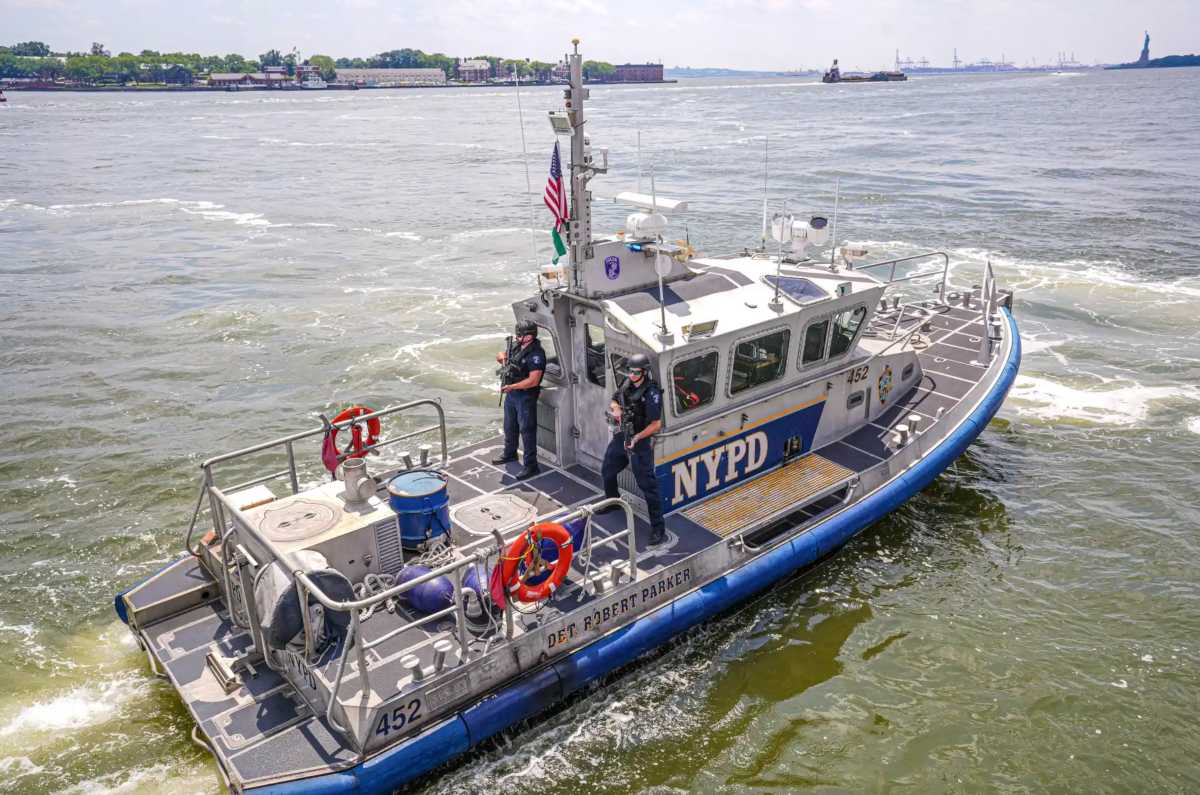To Make Rails Resilient In Storms
Gov. Andrew M. Cuomo unveiled a coordinated transportation resiliency program to help prepare the region for future emergencies, reduce the impact of future storms on vital transportation infrastructure, and improve the long-term reliability and resiliency of the public transportation network.
At Cuomo’s direction, the Metropolitan Transportation Authority (MTA), the Port Authority of New York and New Jersey (PANYNJ) and the Moynihan Station Development Corporation (MSDC) worked together to prepare a plan that considered transportation needs and priorities on a regional level, in order to protect against stronger and more frequent storms in the future.
A key element of the plan is protecting commuter railroad access into Manhattan, by hardening Penn Station’s existing railroad service and providing alternate service to Penn Station for MTA Metro-North Railroad customers in the event of a single-point failure along its existing network through upper Manhattan and the Bronx.
“Our response to the billions in damage Superstorm Sandy caused our transportation system is to build back stronger, better and smarter than before,” Cuomo said. “These projects build on the State’s commitment to transforming our infrastructure, transportation networks, energy supply, and coastal protections to better protect New Yorkers from future disaster.”
The plan will be submitted this week to the Federal Transit Administration (FTA), which has made $3 billion available for resiliency programs throughout the region affected by Sandy. The New York plan includes projects worth $4.9 billion.
The state’s applications exceed available federal funding because the projects represent the extensive need New York faces in trying to protect its vital infrastructure, according to the governor.
The Penn Station Access Network Resiliency effort would give Metro- North an alternate means to enter midtown Manhattan if its four-track main line through the Bronx or the Harlem River Lift Bridge were ever disrupted for a prolonged period. An outage there would halt commuter rail travel in New York’s northern suburbs and southeastern Connecticut, with a devastating impact on the regional economy. It has a $516 million estimated cost, of which $387 million is eligible for federal funding.
The River-to-River Rail Resiliency effort would protect the East River Tunnels and Penn Station, used by the MTA Long Island Rail Road as well as Amtrak and NJ Transit. It has a $321 million estimated cost, of which $241 million is eligible for federal funding.
The plan also hardens infrastructure and improves network resiliency for all forms of transit in New York. Other projects would mitigate flood risk at New York City Transit subway yards and bus depots by hardening structures; seal entrances to subway tunnels and ventilation plants; make the World Trade Center site more resilient against water intrusion; and enhance Port Authority Bus Terminal operations to provide alternate service during rail outages.
Cuomo’s plan also includes projects to improve the PATH rapid transit line through Manhattan, the John F. Kennedy International Airport AirTrain station at Howard Beach in Queens, and the Staten Island Railway.
“We can’t just focus on recovery from Sandy, we’ve also got to prepare for the next superstorm,” said Rep. Carolyn Maloney. “The resiliency plan outlined by the governor will move us toward that goal. We’ve already secured a significant amount of federal funding for this plan, and I’m going to continue working to ensure that New York has the resources it needs to be prepared.”
“Our safety and security is my number one priority. Strengthening NYC’s public transportation system, especially in coastal areas like in Queens and Nassau, is absolutely essential to protecting our communities from future natural disasters,” added Rep. Gregory Meeks. “These investments focus essential resources to build a better, more resilient and redundant transit system that meets the demands of our community.”
“Making New York’s public transportation systems more resilient to disasters is, without question, a necessity in a city as central to the nation’s economy as ours,” said Rep. Joe Crowley. “After Superstorm Sandy, we saw just how incapacitated our city is when residents can’t use the transit they rely on to get to work every day. I’m glad Governor Cuomo has made this a priority because it is especially important for those in Queens and the Bronx who have limited transportation options.
“After Hurricane Sandy wreaked havoc on our region, it became clear that we need to invest more resources to protect our transportation infrastructure against future storms, and this plan would go a long way towards accomplishing that goal,” said Rep. Grace Meng. “I look forward to working with the governor to implement this critical program.”
These projects build on Cuomo’s commitment to transforming New York’s infrastructure, transportation networks, energy supply, coastal protection, weather warning system and emergency management to better protect New Yorkers from future extreme weather.
Some of the projects already underway in New York State are building the most advanced weather detection system in the nation, with 125 interconnected weather stations to provide real-time warnings of local extreme weather and flood conditions; launching the nation’s first College of Emergency Preparedness, Homeland Security, and Cybersecurity; building new natural infrastructure to protect the New York coastline, and provide advanced flood control for inland waterways; and expanding the $650 million NY Rising Community Reconstruction program to allow 124 communities around the state to create their own individualized storm resilience plans.
The transportation projects being submitted to the FTA are listed below in priority order for the MTA and the Port Authority. All were prepared using a comprehensive inventory and risk assessment to identify vulnerable assets and protect critical services.
These projects are consistent with recommendations in numerous reports issued by city, state and national organizations aimed at improving the resilience of infrastructure, and will be coordinated with other regional priorities, including those funded by other federal agencies.































